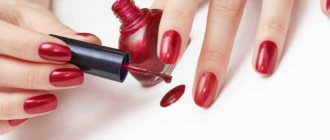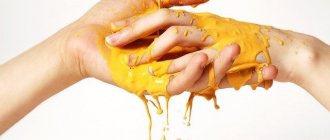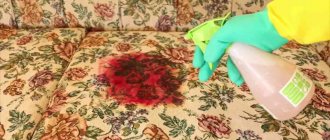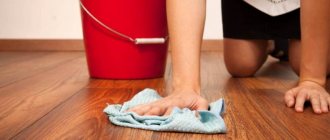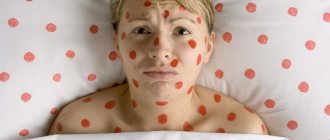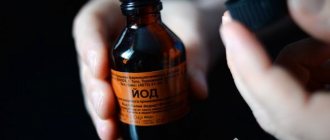The most common oral disease is stomatitis. To treat this disease, many doctors recommend blue to the patient. This is not the product that our grandmothers and mothers added to white paint when whitewashing ceilings. We are talking about a strong antiseptic that can neutralize pathogenic foci of stomatitis.
And so you bought beautiful things in the online clothing store for women with the taste of Alfasale, but accidentally stained them with the ill-fated blue. What to do?
This medication has a distinct blue color. And if it accidentally gets on your clothes, a bright spot appears, which can ruin the overall appearance of the product. At the same time, you shouldn’t be too upset, since using ordinary improvised means you can easily remove any contamination.
An excellent remedy in the fight against bright spots is hydrogen peroxide. It is recommended to use it only for processing light-colored items. Peroxide has a bleaching effect, which can cause even more damage to dark-colored items.
The liquid from the bottle is mixed with water in a 1:1 ratio. The item is placed in the resulting solution and left for approximately 30 minutes. Next, the clothes are washed in cold water. If traces of bluing remain, the procedure must be repeated, increasing the dose of peroxide.
Machine washable bleaching
There is an opinion among many housewives that tulle cannot be washed and bleached in an automatic machine, since the fabric is too delicate. In old machines it was really impossible to wash thin materials; they could become hopelessly damaged, even torn. A modern automatic machine is multifunctional: it will remove all dirt, bleach, and preserve the integrity of the fabric fibers.
How to wash white tulle in order to bleach it in a washing machine, and the curtain will shine clean again? Manufacturers of automatic machines have different programs for gentle washing, but each of them has a mode that will carefully wash and whiten thin tulle:
- silk;
- wool;
- for delicate linen;
- delicate;
- handwash.
Each of these programs is suitable for the finest tulle.
The temperature (not higher than 30°C) is set automatically, except for hand wash mode.
First aid
For the whitening procedure to be effective, you need to start it immediately. Waiting for the item to dry is not recommended, as this will complicate the task.
Here's what you need to do first:
- Find the “culprit” of the incident. The dyed item must be removed.
- Wash the faded linen again using powder.
- White linen should be washed in hot water (the maximum allowable value for a particular item).
- Use oxygen bleach to wash whites.
Under no circumstances should you iron faded fabric! This will lead to the “sealing” of the pigment in its fibers. It will be impossible to remove the paint.
How to dye jeans with potassium permanganate?
The word “varenka” drove millions of fashionistas and fashionistas crazy in the mid-eighties. After decades, much has been forgotten, but fashion designers persistently remind us of those years, returning blouses, T-shirts and trousers with this design to the catwalks.
When painting with potassium permanganate, there is no need to boil the item. Potassium permanganate (100g), reacting with a 9% acetic acid solution, brightens the fabric. We crush the hydroperite tablet and make an aqueous solution, which we now use to fix the pattern with a sponge. By imitating modern fashion trends, you can create a sought-after pattern of strong abrasion with light, almost white small spots. Method: dip a stiff metal brush into the first mixture and spray through the mesh.
What things are painted most often?
What sheds first:
- new clothes;
- jeans;
- jackets;
- bright things, especially red, orange, green, black, brown and blue;
- synthetics.
What is most susceptible to staining when washing:
- white fabric of any composition;
- natural fabrics;
- anything that was washed with lightly dyed colored clothing.
Crystal white things should not be washed even with light beige, gray, or pink. There is always a risk of slight staining. And especially do not wash white with red and black, even if dark things have never faded before.
General recommendations
After removing the tulle curtains from the windows, they are first shaken out of dust.
- Before loading, the tulle is carefully folded into a small envelope, rather than somehow stuffed into a drum.
- It is more convenient to use a mesh bag. If it is not there, skillful housewives place the tulle in a small pillowcase and make a few stitches so that the fabric does not move out.
- Conventional powders are not suitable for tulle curtains, since the chemical components of the composition are aggressive to delicate fabrics. Wash with gentle liquid powders, gels, shampoos.
- For tulle, it is necessary to halve the amount of detergent and set the additional rinse mode, as a lot of foam is formed.
- The program is installed without squeezing, nor is it squeezing manually. Shake lightly and hang in place. The tulle will dry, there will be no creases or folds left - no need to iron.
If the fabric is such that it is impossible to do without ironing, a lukewarm iron is suitable for fragile tulle curtains.
Many housewives, speaking on forums, advise soaking the tulle for several hours in a basin or directly in the car to remove stubborn dirt. Then the water is drained and the washing program is set.
How to clean methylene blue
Elena Andreevna [2.7K]
Olive oil should help. Moisten a cotton swab and wipe the skin with it.
At least, that’s what was advised in Oksana Bayrak’s 2004 film “Women’s Intuition.”
the author of the question chose this answer as the best
Literally 30 minutes ago, all my hands were blue. I couldn’t wash it with soap, so I ran here and read that it was almost impossible to wash it off, so I started to get so hysterical. But! There is a way out, I washed it!
So, lemon didn't help.
Nail polish remover didn't help either.
Coloring
To stain with blue you need:
- Wash the item that needs to be dyed and rinse the powder until clear water.
- Dilute the blue according to the instructions. There should be no clumps of coloring matter in the water; it should be of a uniform color.
- Fill the bath with water for dyeing.
- Place the item in the bathroom. It is important that the fabric is evenly spread out (twisting, folding and bending may result in uneven dyeing - this is why it is recommended to dye in the bathtub and not in a basin or other container). The water should completely cover the item being painted. To lightly turn the linen blue, it takes a few minutes, to dye it – from 1 hour. For jeans, 2 hours is usually enough.
- Dry the fabric in a straightened state - the color may change in folds and creases.
When painting with blue, you must remember that:
- High-quality blue does not stain your hands or bathtub. If traces of bluing remain, the item can be damaged during bluing - the fabric will become stained.
- Blue cannot be called a permanent dye - the item will fade with each wash, and the procedure must often be repeated again. To obtain a lasting effect, you should use special fabric dyes.
This is actually a very big question because... There are a huge number of both clothes that require special handling conditions and stains, each of which is removed differently. You don’t have to think too much about it because there are various stain removers that successfully cope with stains, but what to do if it is not always possible to use chemicals or if you first want to try to remove everything on your own?
We will not go into much detail or describe anything, but will only write what stains and how to remove them. So, let's begin: 1. Oil paint stains are best removed with a mixture of gasoline, acetone and turpentine in equal parts. 2. Fresh ink stains on clothes are quickly removed with milk. 3. Wipe damp stains on the fabric with a cloth soaked in curdled milk whey. 4. Black velvet is cleaned first with a brush slightly moistened with kerosene, and then with a dry, clean brush. Allow the dress to air so that the smell of kerosene disappears, and straighten it by holding it over the steam. 5. To clean suede shoes, wipe them with a cloth moistened with water and ammonia, and then go over them with a rubber brush. 6. Rust stains on white fabric are removed with a solution of hydrosulfite (1 part to 10 parts water). Rust is also removed with oxalic acid, but its effect on the fabric should not be long-lasting. 7. To remove rust from colored fabrics, use a mixture of equal parts glycerin and grated soap. Add a little water to this mixture to obtain a homogeneous mass and cover the stain with it for a day, then wash it off with water 8. A solution of table salt (a teaspoon of salt in 2 cups of water) will help against such a popular stain on children's clothing as grass. Green stains are removed from white fabrics with a 3% solution of hydrogen peroxide mixed with a few drops of ammonia. 9.Iodine stains are removed with starch paste. 10. This type of stain, like bluing, cannot be washed off by any means, it can only be made a little paler.
The top ten popular spots are complete, but we're just getting started. There are many spots and also many ways, so let's continue. 11.Soot stains can be easily removed with ordinary laundry soap. 12. You can remove mold stains in the following ways: - from cotton and linen. Go over the stain with a swab soaked in diluted 3% ammonia. -on wool and silk - pass with a swab with clean turpentine, wipe with a swab dipped in a soap solution, then rinse with water. 13. You can remove greasy stains in the following original way: - place the product on a piece of cellophane, pour gasoline over the stain in a galosh, cover the top with cellophane, press down with thick glass. After half an hour, pour ammonia over the stain and wash, then boil in an aqueous solution of liquid glass. - grease stains can also be removed by treating them with regular dishwashing detergent before washing. 14.Fresh stains from apples, raspberries, and cherries will be washed off with a swab soaked in warm milk and soapy water. 15. Beer stains are removed with warm ammonia, then the fabric is washed in warm soapy water. 16. Lipstick stains on wool and silk can be easily removed with pure alcohol. 17. Chocolate stains can be removed in very salty water, or you can remove them by wiping them with a solution of ammonia. Another method is to pour boiling soapy water over such stains. 18.Coffee, tea, and ink stains from white fabric can be removed with hydrogen peroxide. 19.Hair dye stains can be removed with a solution of hydrogen peroxide and ammonia. 20. Stains from a ballpoint pen are removed using denatured alcohol.
Another dozen stains on clothes are behind. You can already conclude that many stains can be removed with such common things as ammonia, peroxide and soapy water. And we will continue: 21. Stains from colored mascara are removed with an aqueous solution of borax or ammonia. 22.Vegetable oil will easily help remove regular kerosene. 23. Stains from stearin, paraffin, and wax from cotton, wool and silk fabrics of various colors can be removed with gasoline or turpentine, after carefully scraping off the stain. 24. Fresh blood stains should first be washed in cold water and then with a warm soapy solution. Wipe old stains with a solution of ammonia (1 teaspoon per glass of water), then with the same solution of borax. 25. Stains from fish and canned food can be removed with a mixture of 1 teaspoon of glycerin, 1/2 teaspoon of ammonia, 1 teaspoon of water.
I would also like to share with you a cheat sheet picture in which you can see what stains are and how they can be removed (right-click on the picture to open for full viewing). Use it!
We could go on and on about various stains and methods for removing them, but we won’t continue. If something is not mentioned, there are millions of sites on the Internet with similar information. Finally, let’s say that to save time or if all else fails, purchase a regular stain remover. For example, stain removers from Amway are now popular. Stain removers very quickly help get rid of most stains that regularly stain clothes. And we have everything, see you soon on our website.
Source of the article: https://pyrogi.ru/garderob/kak-polzovatsya-sinkoj-2.html
How to neutralize blue stains on clothes, How to remove methylene blue from clothes.
How to remove a stain from white clothes: a few tips
1. Don't put off washing.
The sooner you start cleaning a fresh stain from your clothes, the better you will get it out. This is especially important for white clothes. You can start by washing it as usual (stain remover will also help during washing).
*You can use laundry soap. To do this, you need to treat the stain with a small bar and then wipe it with a brush (if the type of fabric allows).
2. Do not use chlorinated bleach.
White is also a color and using chlorinated bleach on white clothing will remove the white color from the fabric. It is best to use peroxide-based bleach.
3. Do not soak the stain.
This will only help the stain set into the fabric even more.
4. Keep the stain away from heat.
It is better to keep dirty clothes in a dry place, away from sunlight. Also, do not dry your clothes with a hairdryer, as the remaining stains will eat into the fabric even more.
Do not iron clothes that have a stain on them.
5. Dishwashing detergent is great for pre-cleaning stains.
6. You can mix peroxide with dishwashing detergent and apply the resulting mixture to the stain.
In severe cases, you can leave the mixture on for a while and wash it off later.
In what cases can only dry cleaning help clothes?
It happens that the only way to clean your clothes is to take them to the dry cleaner. Here's when to do it:
1. Immediately after a stain from fatty foods (cheese, butter) appears.
2. Immediately after contamination of delicate fabrics that cannot be washed in a machine (silk, wool, cashmere).
3. There is an old stain on the clothes.
Blue for linen
In Soviet times, every self-respecting housewife had blue for linen in stock. This is a powder for quickly enhancing the color of white or blue bedding and clothing made from natural fabrics. Currently, there are many powders that contain bleaches and various color additives for additional color saturation. But nevertheless, blue remains the most accessible substance, which gives fabrics not only freshness and newness, but also the desired shade if the blue substance is used as a dye.
Blue is most often starch, the composition of which is combined with blue mineral paint, mainly ultramarine, blue aniline dyes, indigo carmine, Paris blue or Prussian blue. Household blue is available in liquid, paste or powder form and is divided into two types: soluble and insoluble. Dyes that are highly soluble in water guarantee more uniform toning, coloring and saturation. Insoluble ones are much cheaper and are mainly suitable for refreshing linen made from natural fabrics. You can buy fabric blue in any store in the household chemicals department.
A little about fucorcin
The drug is an alcohol solution of several substances:
- Boric acid – 0.8 parts.
- Phenol – 3.9 parts.
- Acetone – 4.9 parts.
- Resorcinol – 7.3 parts.
- Ethyl alcohol 95% – 9.6 parts.
- Distilled water – 100 parts.
- Basic fuchsin – 0.4 parts.
Last on the list, fuchsin, or rosaniline hydrochloride, is responsible for the coloring properties of the liquid. Combination with other ingredients creates an excellent long-lasting dye with medicinal indications:
- It is used in the production of pencils, as fillers for alcohol markers, the ink base of copy paper and colored ballpoint pen paste.
- In microbiology it is used for highlighting bacteria using the Gram method and in research work on histology.
- Shows antiseptic properties. Destroys staphylococci along with brilliant green or blue (methylene blue). External use drug. It is used for open superficial wounds, ulcers, fungal diseases: many parents know pink spots on the child’s body after chickenpox - these are traces of fucorcin.
The substance itself has weak light-resistant characteristics - under the influence of solar radiation it brightens within 3
7 days. But, due to the excellent penetrating ability into the structure of various materials, the color shade will remain for several weeks and months.
Once in the hands of a young “Raphael” or “Picasso,” the medicinal dye can transform beyond recognition not only the baby himself, but also the interior of the room, including clothes. Parents, in addition to the “positive” emotions from the picture that appeared before their eyes, will have to solve a difficult problem - how to wipe off the fucorcin, how to get rid of the cheerful pink creations of their own child.
Using blue for linen
More effective coloring and refreshment of natural linen can be achieved thanks to the instructions for use of this drug. In the description, pay attention to the procedures in which this substance is used. Certain types of blue are used during washing, some varieties - during the main or final rinsing or soaking process.
It doesn’t matter whether you are going to dye clothes or simply turn your linen blue, the main thing is to use a material based on natural cotton or linen fibers. In order to ensure the quality of the product and its correct dilution, you can initially experiment on a small piece of fabric.
Most often, classic shades of jeans, blue and light blue underwear, and less often white fabric are dyed blue. In order to get a good tinting result, use water-soluble bluing for rinsing. Insoluble may give unwanted divorce). Before use, dry or liquid coloring pigment is thoroughly dissolved in water until a uniform color without clots is obtained. To obtain an ideal solution, the liquid is often filtered through several layers of gauze.
The dyeing process should only be done with clean, washed and rinsed laundry. If the item is large enough, it is best to paint it in the bath. The container is filled with water so that the water completely covers the material. The dye solution is poured into the bath, and the color scheme is regulated by both the concentration of the solution and the volume of water in the vessel. The linen is lowered into the bathtub in a straightened form without folds or bends and kept for a certain amount of time. Good color fixation is achieved after 1-2 hours, but in the instructions for use you can find a more detailed description of the ratios of types of fabric and tinting time. After this, the item is rinsed in plain water or water mixed with vinegar and hung flat to dry.
To eliminate the yellowish tint on white linen, you can use a weak blue solution. Ultramarine gives the material a slightly noticeable bluish tint, which makes the fabric visually whiter.
Manual method
With the manual method, the laundry is blued at the time of the last rinse. To do this, prepare a solution of the dye in the ratio: 0.3 g of powder per 10 liters of water or 2/3 tsp. a paste-like substance or 1-2 dragees are placed in a tightly tied gauze or fabric bag and dipped in water prepared for rinsing clothes. The bag of pigment is soaked until the desired uniform shade is obtained. Liquid blue is dissolved at the rate of 3-4 drops of the substance per 1 liter of cool water. After this, the laundry is lowered into the water (preferably not all at once, but one item at a time) and held for 3-5 seconds.
In the washing machine
Modern bluing agents can be used when washing and dyeing materials and in automatic washing machines, if this is indicated on the preparation. With the mechanical method, it is also necessary to check the liquid dye solution for the presence of unnecessary clots, and thoroughly dissolve the powdery substance in water and remove excess grains of sand, which can lead to damage to clothing. Blue is added to the drum or compartment for cleaning solutions. If the description of the coloring agent recommends adding salt or soda, then you should heed this advice. This is necessary to fix the color. Depending on the density of the fabric, you need to choose the type of washing. This can be intensive washing, cotton processing or washing at 90-95 degrees Celsius. After automatic washing, it is advisable to place the fabric in a container with a vinegar solution to fix the color. To prevent other items from becoming stained when processed in the washing machine, the equipment is run empty and a little bleach is added to the powder compartment. After manipulations, the inside of the machine is wiped dry.
- Blue is needed for those who prefer simplified processing methods to a variety of toxic bleaching powders.
- A high-quality product does not stain containers or the skin of your hands.
- Blue is not a permanent dye. Each subsequent wash will wash out the color pigments, so re-blueing should be done from time to time.
- To obtain a good result, each item must be processed separately.
- Table salt added along with the blue when rinsing will help keep the blue color longer.
- To achieve the desired result, it is better to first practice on old things.
- Always read the instructions for use of the dye, because depending on the manufacturer, release form and composition, dyeing may have different results.
- Blue blue, which contains starch, should be boiled after dilution and then strained.
- Do not try to replace the bluing with a blue item of clothing when washing white clothes in the machine, as this may lead to unpredictable results.
- The chemical should be stored in a tightly closed container out of the reach of children.
Blue is a fairly cheap substance that can replace many expensive powders with a whitening effect. It is also an indispensable product for adding freshness to linen and richness to blue and blue clothes. Also, such a simple, popular substance as blueing can serve as a source of inspiration for creating unusual shades or patterns when dyeing.
Comments
Yeeeeeeeeeeeeeeeeeeeeeeeeeeeeeeeeeeeeeeeeeeeeeeeeeeeeeeeeeeeeeeeeeship, blue, this is something new. I've heard about strawberry jam, but blue... also for prevention? Why take prophylaxis against thrush? Don't go to this doctor again, he is not a doctor
What's wrong with that? Methylene blue full medical name of the drug
I'm aware, thanks. Isn’t it embarrassing that it gets into the child’s mouth?
No. At least read the instructions... so, for starters
Well? Contraindicated for children under 1 year of age and not a word about candida or prevention
Analgin is also not recommended to be given at all until 2-3 years of age. Well, for example
Where is this written in the instructions for the drug? 30 years ago it was used officially. ulcerative diseases of the skin, but not fungal diseases of the mucous membrane of such a scarlet child, also for prevention. There are a bunch of other methods of modern treatment, I am one and a half hundred TREATMENT, not prevention of blue.
As for analgin, it is not recommended at all, even for adults. A toxic drug of the last century. And even for that matter, then 2-3 years and 5 weeks, the difference is not bad
The drug is an antiseptic. There's nothing wrong with it. The old-school doctor decided to recommend this particular method. And throwing around the words “this is not a doctor” without understanding it is not correct.
Antiseptic for external use, if a person in the 21st century prescribes this, then this is not a doctor
Well, in the ambulance, for example, only analgin for temperature? there are rarely syrups or candles. This is in Russia, I don’t know about you
Who is he? Who told you that bluing is only for the outside?
It can also be administered intravenously as an antidote. When diagnosing/treating the urinary system, take orally
Read the instructions, not how they were used 30 years ago. In our medicine, as in yours, there are a lot of drugs that are used but have long been banned all over the world
Have you read it?? Application remains external, internal, intravenous and even intramuscular. The difference is that it is practically no longer used, since more advanced modern drugs have appeared. But, I repeat, calling a doctor not a doctor for recommending the use of this particular drug as an antiseptic is not correct. As for analgin, there are a lot of advisers here on the forum who immediately advise calling an ambulance if a child has a fever so that the team can give an injection. Panacea holy injection! ?
Source
How to use blue for linen?
Household blue is considered a mixture of dye and starch, sold in powder or liquid form. The substance is usually used as a bed linen freshener. Linen bluing allows you to make linen and cotton shirts white. It is also used for tinting materials. More details about this tool are described in the article.
Blue for linen is divided into 2 types: with soluble and insoluble dye. The second option is considered cheap; it is used only when refreshing products. Soluble - for dyeing clothes.
What is the composition of blue for linen? It is a sodium aluminosilicate containing sulfur and sodium sulfate. In the USSR, grade 1 and grade 2 products were sold, which differed in intensity and shade. The blue should dissolve easily in water. Because of its lightness, it does not stay at the bottom for long. The composition of the Soviet product excluded the presence of organic dyes, Prussian blue and soot.
Painting with this product should only be carried out on suitable materials. It must be taken into account that:
- Blue for laundry must be water soluble. Then you will get a uniform color - insoluble ones make streaks when used in a concentrated manner.
- Powder and liquid should be diluted with water until dissolved before use.
- The substance is used for washing and rinsing. If you need coloring, it is advisable to choose a special product.
- The product is used to dye white materials and refresh blue fabrics. Dark colors do not change, but other light colors may produce unexpected results. The substance is typically used in updating jeans.
- Linen bluing can dye natural fabrics.
A good old tip for removing stains is to use a stain remover.
Today, there is a large selection of stain removers on the market, some of which cope very well with the tasks assigned to them, while others are not able to remove even the simplest stains of various origins, starting with simple coffee or tea stains.
You should know that some stain removers are quite aggressive and therefore are not suitable for some types of fabrics. They can be used only in small quantities in order to remove complex contaminants.
How to choose the right stain remover in a particular case? Let's try to understand this issue. It is allowed to use only highly specialized means.
You should not believe the tricks of advertisers who claim that there are universal cleaning products that are ideal for all types of fabrics. It is a myth. They are either unable to remove stubborn stains, or are absolutely not suitable for washing delicate fabrics such as silk.
How to remove stubborn stains using one type of stain remover or another? The main thing is to carefully read the instructions before you start removing contaminated areas.
If you make a mistake in the proportions, you can not only get rid of a stain on jeans or any other clothing, but also ruin the natural color of the item. This is unlikely to be a pleasant surprise for you.
Therefore, you should be extremely careful when you are trying to wash old stains from white or colored clothes at home.
Of course, without the appropriate education, it is quite difficult to understand the composition of stain removers, but, after all, you have the Internet. There you can see how certain components affect them, how they can be dangerous, etc.
But it is worth noting that sometimes stubborn stains cannot be removed with the help of a stain remover, even the most expensive one. We have to resort to the most reliable and effective methods - folk ones.
Many housewives are confident that they are more effective than those products sold in household chemical stores.
Preparation
The procedure for updating clothes is simple if you follow all the recommendations:
- Before painting, the item must be washed and inspected for streaks and stains.
- It is important to check the pockets - no objects are allowed in them.
- You should read the information on the label - often items are not suitable for dyeing in the washing machine.
- Manufacturers indicate important information on the packaging, so you should read the instructions.
How is blue linen used? The instructions will allow you to perform the procedure correctly:
- Dilute the substance according to the instructions. There should be no clots of coloring agent left in the water; it should be uniform in color.
- The bath needs to be filled with water.
- Then you should lay out your clothes in the bathroom. Uniformity is necessary so that when dyeing you get one color. The water should cover the item. For a slight bluing, a few minutes are enough, and for coloring from 1 hour. For jeans you need 2 hours.
- Then the item must be dried flat.
Using the washing machine
If allowed, bluing for washing clothes can be used in the washing machine. You can also do coloring. The work is performed in the following sequence:
- You should check whether there are any dense lumps in the liquid dye, and the powdered dye should be diluted with water. Grains of sand can ruin clothes and leave bright stains on them.
- The product is added to the drum of the machine. If the instructions say to add soda or salt, then do so. This is required to fix the color.
- You need to choose an intensive wash if the fabric is thick. And the temperature is 90-95 degrees. The cycle is long.
- Do not use washing powders, rinse aids and other products.
- After washing, jeans should be placed in a basin to soak in vinegar, which will fix the color.
- To prevent other clothes from getting dirty, the car is turned on at idle speed and then wiped from the inside. It is advisable to add a small amount of bleach to the powder compartment.
When using blue, you need to consider that:
- A quality product will not stain your hands or bathtub. If traces of it remain, there is a possibility of damage to the item.
- Blue is not considered a permanent dye - it fades with each wash, so repeated procedures are required. For lasting results, you need to use special paints for materials.
Each item needs to be processed separately if you want to get an excellent result. It is necessary to adhere to the rules of the procedure, observing the time period for painting.
The dyes have good resistance to external factors, so you can safely wash them. But you should not prolong the procedure or change the temperature. It is advisable to wash the item by hand with water at 40 degrees. Thus, blue can be used to color things. It is usually used for jeans. Even an old thing takes on a new look.
Baking soda: a great stain remover
Using baking soda, you can remove almost any stain, including bluing. However, this product is very different from professional whitening products. It does not contain chemicals harmful to the human body. Baking soda can be used to remove stains from babies' clothes; it will not harm their health. In addition, white powder has a low cost, and is in the arsenal of almost every housewife.
To get rid of traces of blue on clothes, you need to perform the following manipulations:
- The contaminated product is laid out on a hard horizontal surface so that the stain is clearly visible.
- Afterwards, powder is poured onto the problem area and rubbed in well.
- The item is left for approximately 20 minutes.
- Afterwards, the remaining soda is removed using a brush with natural bristles.
- The product can be washed manually or in an automatic machine (it all depends on the manufacturer’s recommendations).
After this treatment, some things become a little rough. Vinegar will help restore them to their original appearance. This product is added to the final rinse water.
Is it possible to dye jeans blue?
Water-soluble and water-insoluble dyes can be used as a blue for dyeing jeans. These can be liquid or powder.
- Prussian blue;
- indigo carmine;
- Paris blue;
- ultramarine;
- anilic dyes.
All these types of dyes can be used when dyeing jeans, you just need to take into account some of the characteristics of the dyes. For example, Prussian blue can only dissolve in water together with oxalic acid. Anil dyes become discolored in the sun, some of them acquire a reddish color when ironed. Ultramarine is quite cheap, but it does not dissolve. Insoluble paints stain fabric worse and are more difficult to work with. There may be difficulties due to uneven dyeing, especially on heavy items: insoluble crystals can stain clothing in the form of stains.
It should be taken into account that if there is embroidery on jeans, it will inevitably deteriorate and turn blue. The item will look washed out and untidy, and bright embroidery threads will have a dirty effect.
Denim items in shades other than blue cannot be dyed blue. Blue and light blue shades that need to be refreshed or re-tinted can be used. It is acceptable to dye white and light gray jeans, which will turn blue when used with bluing. The final shade will in any case depend on the original color.
What to do?
The very first thing is not to panic. Besides staining, fucorcin cannot cause any other harm. The first step, if this is the work of a young artist, is to remove the object of creativity and put it in an inaccessible place. After that, get creative yourself. Creativity of tidying up both the child’s appearance and the interior.
We wash a young fidget
There is nothing wrong with the fact that the child has become more pink, especially his arms, legs and face. After all, it was previously painted with bright dots. Now the drawing area has become larger. But, it is necessary to check the reaction of the child’s skin to the increased exposure to the drug - a drug burn may occur.
How to dye jeans blue at home
You can properly blue your jeans either manually or in a washing machine. Dyeing by hand is a little more laborious, but soaking for many hours provides a more permanent result. Painting in a washing machine guarantees more uniform coloring, since the constant movement of the drum prevents the paint from settling on one particular area. By constantly mixing water and paint, the item is painted to a higher quality than by hand.
How to dye jeans by hand
Blue is diluted in cold water and poured into warm water. It is very important to do everything as required by the instructions, since substances are partially colored during the washing process, and partially during rinsing. You need to calculate 0.5 g of dye per kilogram of dry denim.
After the paint has been prepared, the jeans are carefully straightened and dipped into the blue solution. It is better to take bulky dishes for this, for example, a wide basin or a small bath, since the fabric should be spread out in one layer. If the material is folded in several layers, or there are folds on it, it is guaranteed to be unevenly colored and will have to be repainted. The water should be at the same level and soak evenly.
After some time, the product is removed. Here we must immediately make a reservation. If you are generally satisfied with the original color and just need to refresh it a little, 2 hours of soaking in blue will be quite enough. If the shade of the jeans is dull and you need full coloring, it will take 12 hours. During this time, the rough fabric will have time to soak properly, the result will be durable and rich.
Next, the denim item is rinsed in two or three waters. Be sure to add 5-7 tablespoons of food vinegar so that the shade is firmly established. Table salt added in the same amount to 10 liters of water has a similar effect.
You need to dry dyed jeans in a well-ventilated area so that the unpleasant smell of vinegar disappears. Be sure to avoid direct sunlight.
How to dye jeans blue in the washing machine
Not everyone wants to bother with hand dyeing. You can also blue your jeans in the washing machine, the main thing is to do it correctly. This method will allow you to carefully paint your favorite item without getting your hands dirty. To do this, you just need to wash your jeans in blue.
To dye jeans in the washing machine, the liquid dye is checked for the presence of lumps, and the powder is diluted in water. The proportions are the same as for manual dyeing: 0.5 g of dye is taken per 1 kg of dry denim.
The diluted blue is immediately poured into the drum of the washing machine. Salt or vinegar, which fixes the shade, is also immediately added to the drum. No need to add washing powder or conditioner. Select the intensive wash mode for thick items at high temperatures and set the longest mode.
After the jeans have been bluish, the shade is fixed again. Vinegar is poured into a wide basin and mixed with water (5-7 spoons per 10 liters). The item is straightened out in a basin and kept for an hour. Wring out and dry in a ventilated place, out of direct sunlight.
Blood stains
If the blood stain is fresh, it is enough to wash it in soapy cold water (in hot water, the protein coagulates and becomes harder to wash). If traces still remain, moisten the area with ammonia and leave for 15 minutes. Then hand wash again in soapy cold water.
Dried blood stains are more difficult to remove, but they are also possible. Dilute 2 tbsp. spoons of salt per 1 liter of water. Soak the fabric in this solution for 12 hours. Then wash the item in powder at 60° - in 9 out of 10 cases the stain goes away. If you still have the tenth case, then you will have to use a specialized stain remover, for example, Dr. Beckmann, which removes blood and protein stains well.
Precautionary measures
As with any other dyeing, bluing also requires precautions.
- All painting manipulations should be carried out only with rubber gloves.
- When working with blue and vinegar, you must protect your eyes and mucous membranes. Acrid fumes can cause irritation. Therefore, it is appropriate to wear a medical mask.
- After dyeing an item using bluing, avoid washing this item with other clothes in the future due to the likelihood of shedding.
- All painting work should be carried out in a well-ventilated room.
